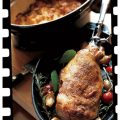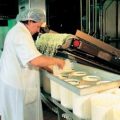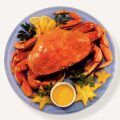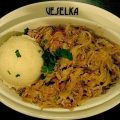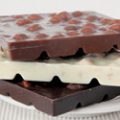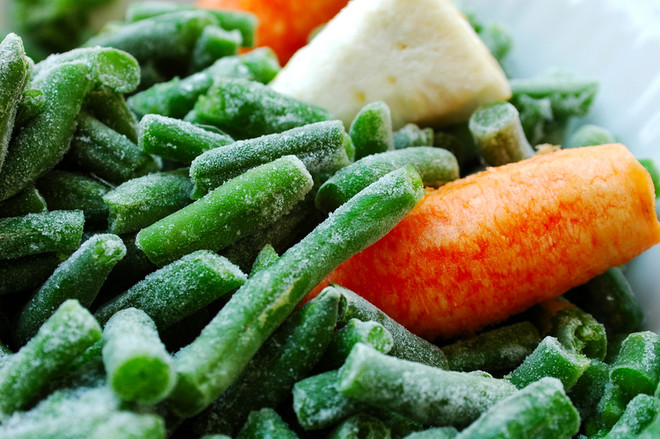 Freezing of productsFish, meat, vegetables canStore in the freezer along with fully prepared food. Time-consuming dishes can be prepared in advance when you have free time and frozen, and then cooked when needed, for example, if you have guests. But to do this, you need to know a few tricks for proper freezing and safe storage of food. To freeze fresh food, you need to use deep freezers. The temperature inside should be from -18°C to -23°C. Before freezing, the food must be completely cooled. How to prepare food for freezing? Immediately before freezing, the prepared dish should be wrapped in waterproof film and try to release all the air from the bag to prevent drying out and discoloration. Polyethylene freezer bags are suitable for all types of food, but for liquids it is better to use solid containers, which are now easily purchased at any hardware store. Strong thick foil is used to freeze small portions of food or pieces of meat, poultry, fresh fish wrapped in special film. Foil cannot be used for fruits and vegetables containing acid, as it reacts with the foil. And you cannot store food in it for a long time. Vegetables must be scalded or blanched in boiling water for 1-2 minutes before freezing to destroy enzymes that can worsen the taste. Vegetables can be packaged and frozen only after cooling. Cooked dishes must be cooled and frozen as quickly as possible to avoid the development of bacteria that cause spoilage of food. If you were unable to freeze food on the day of preparation, it is better not to freeze it, but to eat it. To cool food quickly at room temperature, it should be placed in the coldest place in the room. Pots and pans can be placed in basins of cold water. Once the food is cool, refrigerate it for 1-2 hours before freezing.
Freezing of productsFish, meat, vegetables canStore in the freezer along with fully prepared food. Time-consuming dishes can be prepared in advance when you have free time and frozen, and then cooked when needed, for example, if you have guests. But to do this, you need to know a few tricks for proper freezing and safe storage of food. To freeze fresh food, you need to use deep freezers. The temperature inside should be from -18°C to -23°C. Before freezing, the food must be completely cooled. How to prepare food for freezing? Immediately before freezing, the prepared dish should be wrapped in waterproof film and try to release all the air from the bag to prevent drying out and discoloration. Polyethylene freezer bags are suitable for all types of food, but for liquids it is better to use solid containers, which are now easily purchased at any hardware store. Strong thick foil is used to freeze small portions of food or pieces of meat, poultry, fresh fish wrapped in special film. Foil cannot be used for fruits and vegetables containing acid, as it reacts with the foil. And you cannot store food in it for a long time. Vegetables must be scalded or blanched in boiling water for 1-2 minutes before freezing to destroy enzymes that can worsen the taste. Vegetables can be packaged and frozen only after cooling. Cooked dishes must be cooled and frozen as quickly as possible to avoid the development of bacteria that cause spoilage of food. If you were unable to freeze food on the day of preparation, it is better not to freeze it, but to eat it. To cool food quickly at room temperature, it should be placed in the coldest place in the room. Pots and pans can be placed in basins of cold water. Once the food is cool, refrigerate it for 1-2 hours before freezing.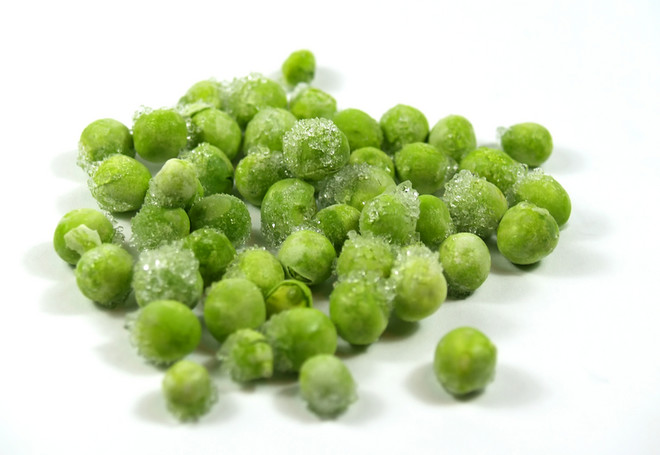 When frozen, the water contained in the productsturns into ice crystals and damages the cellular structure of the ingredients. Therefore, frozen food is much more vulnerable to exposure to bacteria during and after thawing than fresh foods. It should be heated or cooked as soon as possible after thawing or even immediately from the freezer. Raw meat, poultry and fish when thawing should be left on the grate or on an inverted upside down saucer, laid on a plate. Cover with either a large bowl or foil to allow air to circulate freely. It is impossible to leave them in their own juice when they are thawed, which can contain bacteria. Dishes such as soup or stew are usually left overnight in the refrigerator for defrosting. If soups and stew are thawed immediately from the freezer, without preliminary thawing, they need to be heated in a saucepan over low heat, stirring. Dishes that must be thawed and then cooked in the oven must be frozen in a suitable container or carefully wrapped (refractory molds may crack if placed in the oven directly from the freezer). It remains to wish you a pleasant appetite!
When frozen, the water contained in the productsturns into ice crystals and damages the cellular structure of the ingredients. Therefore, frozen food is much more vulnerable to exposure to bacteria during and after thawing than fresh foods. It should be heated or cooked as soon as possible after thawing or even immediately from the freezer. Raw meat, poultry and fish when thawing should be left on the grate or on an inverted upside down saucer, laid on a plate. Cover with either a large bowl or foil to allow air to circulate freely. It is impossible to leave them in their own juice when they are thawed, which can contain bacteria. Dishes such as soup or stew are usually left overnight in the refrigerator for defrosting. If soups and stew are thawed immediately from the freezer, without preliminary thawing, they need to be heated in a saucepan over low heat, stirring. Dishes that must be thawed and then cooked in the oven must be frozen in a suitable container or carefully wrapped (refractory molds may crack if placed in the oven directly from the freezer). It remains to wish you a pleasant appetite!

Making Money with Desserts: Success Stories
Evgeniya Polischuk (Fedutinova) instagram:@evgeniyafedutinovavk.com/janeshomebaking– It all started with baking for family and friends. Gradually, I started posting photos of my baked goods on Instagram – and orders started coming in. I made my first custom-made cake on October 13, 2014, and a little earlier I started making macaroons and cupcakes. You could say that the business “found me”, I am very […]

Soups are cold recipes with photos
Cold cucumber soup with yogurt and lemonsorbet from the chef of the restaurant La Taverna Alexander Zhurkin Photo: Getty Images Ingredients: Plain yoghurt – 125 g Cucumber – 150 g Lemon/lime sorbet – 50 g Cocktail shrimp – 24 g Fresh ginger juice – 1 g Lime juice – 5 g Fresh orange juice – 5 g Parsley – 1 g Pink pepper – 1 g Watercress – […]

barbeque kebab
Pork tenderloin in glaze Photo:Dmitry Bayrak/dbstudioPreparation time: 20 minutes + marinating time.Calories: 454 kcal per serving.For 4 servings: 4 pork tenderloins (approximately 300 g each), 1 onion, 2 cloves of garlic, 1 tsp. lemon zest, 1 tsp. lemon juice, a pinch of ground cumin, coriander and turmeric, 1 tbsp. vegetable […]

Pierre Duacan: dietary recipes: Ducane diet
Beetroot soup Photo:Season’S, Luxury Hotels RepresentationYou will need:· Boiled beetroot – 60 g· Fresh cucumbers – 20 g· Red radish – 20 g· Green onions – 10 g· Egg – 1 pc.· Drinking mineral water – 200 g· Salt – 1 gPreparation:· Boil the egg and beetroot.· Grate the cucumbers, radish and part of the beetroot. Put everything […]
